
CERTIFIED SOUL NUTRITION PESACH 5779 WISHING YOU A HAPPY PESACH! ה”ב ט”עשת חספ חספ ןכעליירפ ןוא רשכ א
4 5 6 8 10 11 12 16 18 20 22 23
SHARE YOUR SPIRIT QUESTIONS FOR THE ~
HEALTHY SPIRIT
YOUR KOSHER KITCHEN: THE MICROWAVE OVEN by Rabbi Sholom Kesselman
KEEPING KOSHER (FOR PESACH)… IN RUSSIA by Leibel Baumgarten
PESACH RECIPE: CALIFORNIA GOURMET FUDGY BROWNIES
A CLOSER LOOK—RED COLOR by Rabbi Sholom Ber Hendel
WHAT HAPPENS TO THE REST OF THE GRAPES? by Rabbi Benzion Chanowitz
KOSHER TRAILBLAZER: STEVEN PHILLIPS, Blue Diamond Growers
~ KOSHER REVOLUTIONIZES INFESTATION MONITORING & CONTROL by Rabbi Yakov Teichman
WHO’S BEHIND THE ~ Rabbi Levi Y. Feigelstock
CHASSIDIC INSIGHTS
SOUL NUTRITION by Rabbi Chaim Fogelman
KOSHER SPIRIT Pesach 5779
EDITOR-IN-CHIEF: Rabbi Chaim Fogelman

EDITOR: Dina Fraenkel
DESIGN: Spotlight Design
We welcome your comments, submissions and letters to the editor.
Mail: 391 Troy Avenue, Brooklyn, NY 11213 Email: editor@kosherspirit.com
the publisher.
Dear Reader,
As we say goodbye to another winter and welcome the spring, I cannot help but notice that it seems like everything around us is changing. From the brutally cold weather patterns to the legalization of hemp-derived supplement products (through the 2018 Farm Bill), things that were simply out of the question just a few years ago seem to be the norm today.
Even in the world of ~ Kosher we are seeing things that did not seem possible in the past. In the past few months our rabbis have visited the formerly embargoed nation of Cuba to review ingredients for a kosher certification, certified the first kosher version of Korean uzo jelly tea, and expanded our certification of plant based meat options.
Despite the turmoil and constant change in the world, consumers can rest assured that our commitment to kosher without compromise is steadfast and solid. Like the Torah and mitzvos, the laws of kosher are timeless and everlasting. That in no way means that we are just sitting back and doing the same old thing by rote; on the contrary, we are always looking to find new ways to improve and execute our commitment to you, the kosher consumer, to ourselves, and of course, to our Creator.
As we prepare to sit around the Seder table, and as we busy ourselves with old traditions that never change, take a minute to reflect and thank Hashem for the things that stay the same, for Torah and mitzvos, for minhagim, and for our steadfast guide to living that remains our compass no matter what storms are churning around us.
Wishing you a very happy and kosher Pesach filled with preparations for the biggest change of all – the coming of Moshiach speedily in our days.
Rabbi Chaim Fogelman
Editor in Chief
portion
be reprinted without
consent from
© 2019. No
of this publication may
written
3
2 www.OK.org
Share your Spirit
New product alert!
Kosher for Passover pre-seasoned cast iron pans are now ~ certified. Currently available at House & Home, Kettle & Cord, Kitchen Caboodles, and The Peppermill. Also available online at amazon.com
Dear Kosher Spirit, Your in depth article [by Rabbi BenZion Chanowitz] on the details of the kosher wine making process has become a reference source for many consumers!


Best wishes for continued hatzlocha, A Grateful Consumer
Dear Kosher Spirit,
I was curious to know the source of the hot water used to pour over the ground coffee in the filter as shown in the device in the photo. I assume it is not directly from the spigot of an urn or a pump pot. Would it be from a cup filled from the urn or pump pot, or is an additional cup (kli shlishi) required? By the way I have never seen this coffee making device, where is it available?
—Shlomo Fried
Ed. Response:
The water must be from a kli shlishi. The device referenced is called a “pour over” and can be purchased online or in stores selling housewares.

FEEDBACK www.KosherSpirit.com 3
CONSUMER FOR THE Questions
We at the ~ are happy to receive your kosher questions...
Dear Kosher Spirit, Why do we sell our chometz before Pesach and how is it done?
Rabbi Levi Y. Schapiro, Rabbinic Coordinator at ~ Kosher, responds:
1. In addition to the prohibition of eating chometz on Pesach, the Torah prohibits the possession of chometz on Pesach. Although, according to Torah Law, one may remove his ownership of chometz by making it “hefker” (i.e. nullifying all chometz from his property), according to Rabbinic Law, we are required to remove all leavened products from our domain.

Traditionally, the disposal is a physical one, removing all chometz from one’s home and burning it before Pesach. The Talmud (Tosefta Pesachim 2) records an option that if one has a lot of chometz and will need it after Pesach, he may sell the chometz to a non-Jew and buy it back after Yom Tov. The sale must be final without conditions; however, one is permitted to show interest in buying back the chometz after Pesach.
Shulchan Oruch (Orach Chaim 448:3), allows this as a standard practice, not only as a last resort.
2. Selling chometz became the common practice during medieval times. Before Pesach, Jewish people would go to their non-Jewish neighbors and friends, and sell them beer, grains, and all other chometz items that they did not want to throw away.
However, about four hundred years ago, the Jewish community became involved in the liquor industry, where the main ingredient was wheat. The amount of chometz that had to be sold was astronomical, and the monetary value of the chometz was very high. The Jewish businessmen could not find non-Jews willing to pay such a large sum for the chometz and store all the merchandise.
To address these issues, the Acharonim introduced the practice of allowing the non-Jew to only give a small portion of the value of the chometz as a down payment
and the rest would be paid at a later date. In addition, they instituted that the Jew will rent the space where the chometz is kept to the non-Jew, thereby considering the chometz to be in the possession of the non-Jew.
This is the procedure followed today; the Jew locks up his chometz in a designated area in his home and the non-Jew rents the space and buys the chometz by giving a small token amount as a down payment. Because this is not the typical form of selling and renting, we perform a series of “kinyanim” to solidify the transaction. It is therefore traditional that one appoints the rabbi, who is knowledgeable regarding these requirements, to act as a power of attorney to perform the sale.
3. The Baal HaTanya requires an additional stringency for mechiras chometz. Because the non-Jew has not paid in full, there is a halachic concern that the sale is not valid. Many authorities explain that if the balance is not directly related to the sale, the sale is still valid. They, therefore, proposed to transfer the debt from the sale to a loan. The Baal HaTanya instituted the practice of involving a 3rd party Jewish guarantor, which changes the structure of the debt obligation. Once the Jewish 3rd party takes primary responsibility (“orev kablan”) for the remaining debt from the sale, the sale is considered complete. Although the non-Jew is still responsible to the 3rd party Jewish guarantor, if the non-Jew fails to pay it would not invalidate the sale.
For a full presentation of Mechiras Chometz see Kosher Spirit, Spring 2007. http://www.ok.org/kosherspirit/spring-2007/ demystifying-the-mitzvah-of-mechiras-chometz/
4 www.OK.org ~
Beets
Beets
are an iconic Passover food, mentioned in the Gemara (Pesachim 114b) as one of the two foods partaken at the seder by Rav Huna. They are seen in many traditional recipes, from borscht to homemade chrein.
1 2 3 4 5 6 7
Beets are rich in nitrates, which aids in circulation and can improve blood pressure.
Beets contain betaine and folate which can lower your risk of heart disease.
Eating beets can help athletes improve endurance and stamina thanks to the nitrates found inside.
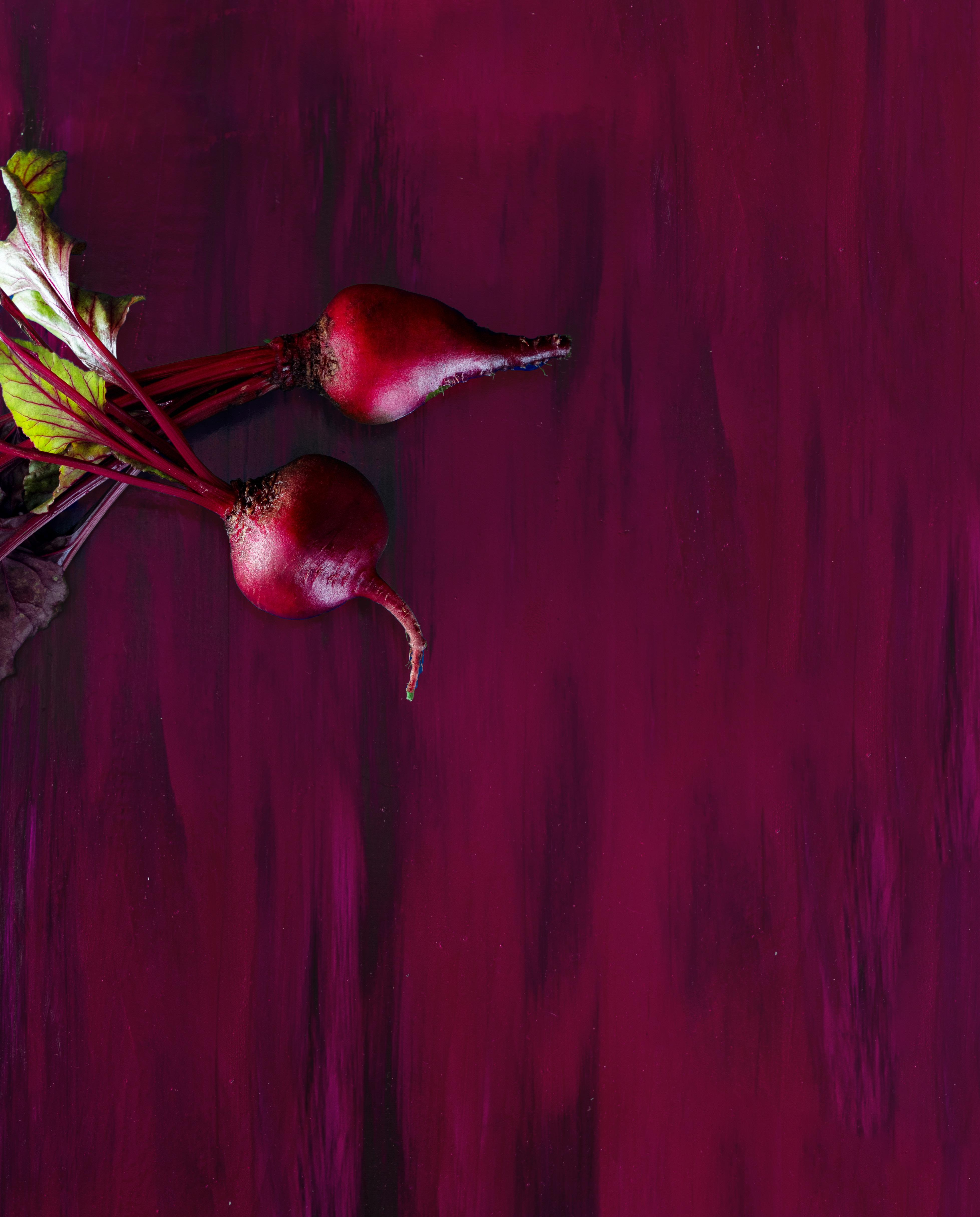
The nitrates in beets improve blood flow to the brain, especially the frontal lobe, a region known to be involved with executive functioning skills like focus, organization, and attention to detail.
The betaine in beets, a natural detoxifier, can help reduce and prevent fatty liver.
The antioxidants and anti-inflammatories in beets can help reduce the risk of chronic diseases. They may even help in the fight against chronic disease.
Beets are a fiber rich food, which is great for digestion and reducing constipation.
www.KosherSpirit.com 5
Kosher Kitchen your The Microwave Oven
By Rabbi Sholom Kesselman, ~ Rabbinic Coordinator
The following discussion applies only to standard microwaves. Convection microwaves, which have the ability to cook by convection or by microwave, have different cooking methods and have a distinct set of cleaning and kashering rules. Convection microwaves will be discussed, G-d willing, in a future issue of Kosher Spirit.
How does a microwave oven work?
Amicrowave is basically a strong metal box. Inside, there is a microwave generator called a magnetron. When the microwave oven is turned on, the magnetron takes electricity from the power outlet and converts it into high-powered radio waves. The radio waves are blasted into the food compartment through a channel called a wave guide. The turntable, upon which the food sits, spins around slowly so that the food will cook evenly. The microwaves bounce back and forth off the reflective metal walls of the food compartment, just like light bounces off a mirror. When the microwaves reach the food, they don’t simply bounce off. Just as radio waves can pass straight through the walls of your house, the microwaves penetrate through the food. As they travel through it, they make the molecules of the food vibrate more quickly. Vibrating molecules have heat, so the faster the molecules vibrate, the hotter the food becomes. Thus, the microwaves pass their energy onto the molecules in the food, rapidly heating it up.
6 www.OK.org
Using the Same Microwave for Meat and Dairy
One may not use the same microwave for meat and dairy. Even if the microwave was cleaned in between uses, there would still be the issue of vapors (העיז). Any person who regularly uses a microwave can feel that the walls, top and bottom of the cooking chamber become greasy over time. This is an indication that the flavors are indeed absorbed into the walls through the escaping steam, as a result of the heat caused by the radiation. These flavors are then discharged when the microwave is used again with another food.
Ideally, one should have separate microwaves for meat and dairy. For anybody who cannot afford two separate microwave ovens (or who does not have enough room in the kitchen), the recommended procedure is to designate the microwave for one primary use – either dairy or meat (usually the one you plan to use it for more). That food can be heated without any limits, in an open dish, etc.
Any food of the other type, or pareve food that will be eaten together with the other type of food, would only be heated within a closed vessel. One should use a double covering. Something like 2 zip-lock bags is sufficient. The standard microwave covers are not sufficient, because they have large holes to allow steam to escape.
Kashering the microwave between meat and dairy on a consistent basis is not permitted, as this can lead to one becoming lax in the kashering or forgetting to do it all together.1
Using a Non-Kosher Microwave
For the same reasons outlined above, one may not use a non-kosher microwave, even if it is clean.
One may, however, warm kosher food in it inside of a closed vessel. One should use a double covering as mentioned above.
Kashering a Microwave
There are 2 types of kashering:
1. M’Heteira L’Heteira (from permissible to permissible) such as from meat to dairy or vice versa, when both the meat and the dairy are kosher.
2. M’Isura L’Heteira (from prohibited to permissible) such as from non-kosher to kosher.
In general, the laws of kashering between two permissible categories are more lenient than kashering from non-kosher to kosher. Therefore, the Poskim make a distinction between kashering a microwave from meat to dairy or vice versa, and kashering from non-kosher to kosher.
The consensus seems to be that one may kasher a microwave from meat to dairy or vice versa. This can only be done as a one-time thing or on a very infrequent basis. One may not use the same microwave consistently for meat and dairy by kashering in between.
Kashering a microwave from non-kosher to kosher, however, can be problematic. Some of the concerns are: food stuck in the vents which is impossible to reach and clean, and the plastic, rubber or glass parts which some Poskim maintain cannot be kashered at all. Due to these challenges, there are Poskim who do not permit kashering a microwave from non-kosher to kosher.
Since microwaves are relatively inexpensive to purchase, it is certainly best to purchase a new microwave, rather than attempt to kasher a non-kosher one. However, in circumstances where this is not possible, the ~ and other Poskim allow kashering from nonkosher to kosher as long as an experienced kashering rabbi is present. Please consult a competent Orthodox rav to discuss your personal circumstances because it is easy for the kashering to be done incorrectly.
When kashering a microwave, the following procedure must be followed:
• The interior of the microwave should be cleaned very well so there is no food residue left behind.
• The vent area should be sprayed with soap or a chemical cleaning solution. This renders any food particles that are stuck inside the vents pogum (ruined).
• After cleaning, the microwave should be left unused for 24 hours.
• The glass tray and the track wheels should be removed and kashered by hagolah.
• To kasher the actual microwave, fill up a cup of water and place it inside. Turn the microwave on and let it heat the water for about 20 minutes or until the cup empties.
• Repeat step 5 after moving the cup to a different spot, in order to kasher the area where the cup sat during the first round of kashering.
*For Pesach, most Poskim agree that a microwave should not be koshered.
www.KosherSpirit.com 7
1. Magen Avraham 509:11
(for Pesach) in... Keeping Kosher
By: Leibel Baumgarten


Imagine you’re doing a last minute shopping run picking up fruits and vegetables for the seder, when you’re approached by two policemen who take you to the local police station for questioning. Now imagine you’re all of 19 years old, hundreds of miles from home, and preparing a seder for some 200 people who may not participate in any other Jewish activities this year!
Such is the life of Rabbinical student volunteers who spread across Russia to run 40 public sedarim in remote cities with no Rabbinic leadership. Strict laws prohibit foreigners from proselytizing, and unaccustomed to seeing Chassidic Jews in black hats, beards and jackets, policemen have on occasion taken students in for questioning before discovering that they are Russian citizens who are conducting legal religious services.
The program is run by Chabad’s Federation of Jewish Communities of Russia, who dispatch 80 students in pairs a few days before the onset of Pesach. Preceding them are shipments of handmade shmurah matzah and machine-made shmurah matzah, along with kosher wine, grape juice, chicken, fish, and other holiday delicacies. Gone are the days when all kosher products needed to be imported from abroad. Thanks to the growing network of Jewish communities in Russia, all of these supplies are produced locally, and shipped to communities across the country. Even cities without student volunteers or with Rabbinic leadership receive thousands of pounds of matzah and other holiday necessities at little or no cost.
Upon arrival, the students will head out to local stores and produce markets to purchase potatoes, horseradish, pots, dishes, cutlery, and tableware. The kitchen will be cleaned
and koshered, all the new dishes will be toiveled in a local river, and the boys will set about preparing meals. In between blowtorching sinks, peeling potatoes and grilling beets, the students will visit local Jewish families, lead communal lectures and classes, seek out Jews who don’t yet know about the seder and do numerous outreach activities.
In years past volunteers flew in from Israel, America and other countries. Recently, because of Russia’s strict laws, and the communities’ desire to have Russian speaking volunteers, the volunteers are all Russian citizens.For the most part, the volunteers are students in Chabad’s Yeshivah Gedolah in Moscow, with some younger members of Chabad’s Mesivta program serving as junior assistants. A few newlywed couples from Chabad’s Kolel also serve as volunteers.
Before the volunteers head out, they take part in special seminars delivered by members of the Moscow Beis Din. They are taught (and review) the intricacies of koshering and toiveling, warned about the potential issues that may arise, and even the best method of cooking and serving chicken for such large groups. Students learn how to deftly deal with other unique questions that are sure to arise in these heavily assimilated communities with astronomical rates of intermarriage.
There are close to 170 communities under the Federation umbrella, 45 of which have a Rabbi, and close to 125 which do not. Of those without, about 40 request that students lead a seder. Attendance at each of these 40 sedarim ranges from 50 to 450. In
8 www.OK.org
all, some 5,000 people will attend a seder led by the student volunteers. The Federation supplies these sedarim with more than 1,500 chickens, 2,000 gallons of wine and grape juice, and 3,000 pounds of potatoes.
This mammoth undertaking takes a team of Federation workers months to arrange. No expense is spared to ensure every community receives everything they need in a timely manner. “We can’t afford to have a single community receive spoiled chicken. That would ruin the entire Pesach!” says Rabbi Yonatan Feldman, who leads the project. “We have people on our team who go through many a sleepless night ensuring our communities get the highest quality kosher food and the best possible experience.”
A community lay leader serves as a liaison between the volunteers and the community, as well as acting as the point person for the Federation in the weeks and months leading up to Pesach. They will also assist in taking care of unique challenges that may be specific to that city. In one or two cities, for instance, there were threats of anti-Semitic violence, and community leaders arranged bodyguards for the students.
In addition to running sedarim, these young student rabbis will conduct youth programs, senior events and adult education classes. They are always looking out for those who may need further assistance and help from the Jewish community in Moscow during the year, from orphanage placement to numer-
ous other religious and humanitarian services.
Many locals continue studying with the students throughout the year through Skype, WhatsApp, or online group lectures. Students distribute mezuzahs, tefillin, Shabbat candles, Jewish books and other religious paraphernalia.
Despite the difficulty and challenges facing these young students, they are up to the task. “The students we send are carefully selected,” says Rabbi Feldman. “They are deeply devoted to helping out far flung communities and will do whatever they can to bring the light and warmth of Pesach to these special Jews.”
For most of the seder participants, it is one of the few times a year they partake in any sort of Jewish practice or event. Some have no knowledge of Judaism other than the fact that they are Jewish. One pair of volunteers took a taxi to the farmer’s market, and the driver turned out to be Jewish. Despite never having experienced anything Jewish previously, he took them up on their seder invitation and following the holiday began to study about Judaism online. He has now became a leader in that community, helping arrange more frequent Jewish programs.
Many students build relationships with the locals and return to lead sedarim in subsequent years. One such community, who had a student volunteer come for Shabbat a few times, now hired that student as a full time Rabbi!
Dozens of children who participated in youth programs later enrolled in Moscow’s Jewish schools, adults visit the Federation’s vast online library to study more about their heritage, and communities increase the number of
holiday programs and Jewish events they run.


Each seder takes months of planning, but its effects last a lifetime. ~
As early as the 1960s, Rabbi Berel Levy, ob”m, and his wife, Mrs. Thelma Levy, shetichye, made trips to Russia at the behest of the Lubavitcher Rebbe to smuggle in Jewish ritual objects to the local Jews. Tzitzis, tefillin, and sefarim were hidden amongst their belongings and Mrs. Levy was known to sternly warn customs officials that they would be responsible to repack all of her belongings if they rifled through her suitcases! You can read about their experiences in the recently released book, Kosher Investigator by Dovid Zaklikowski. I’m sure Rabbi Berel Levy would be amazed to see how the kosher market has grown in Russia.
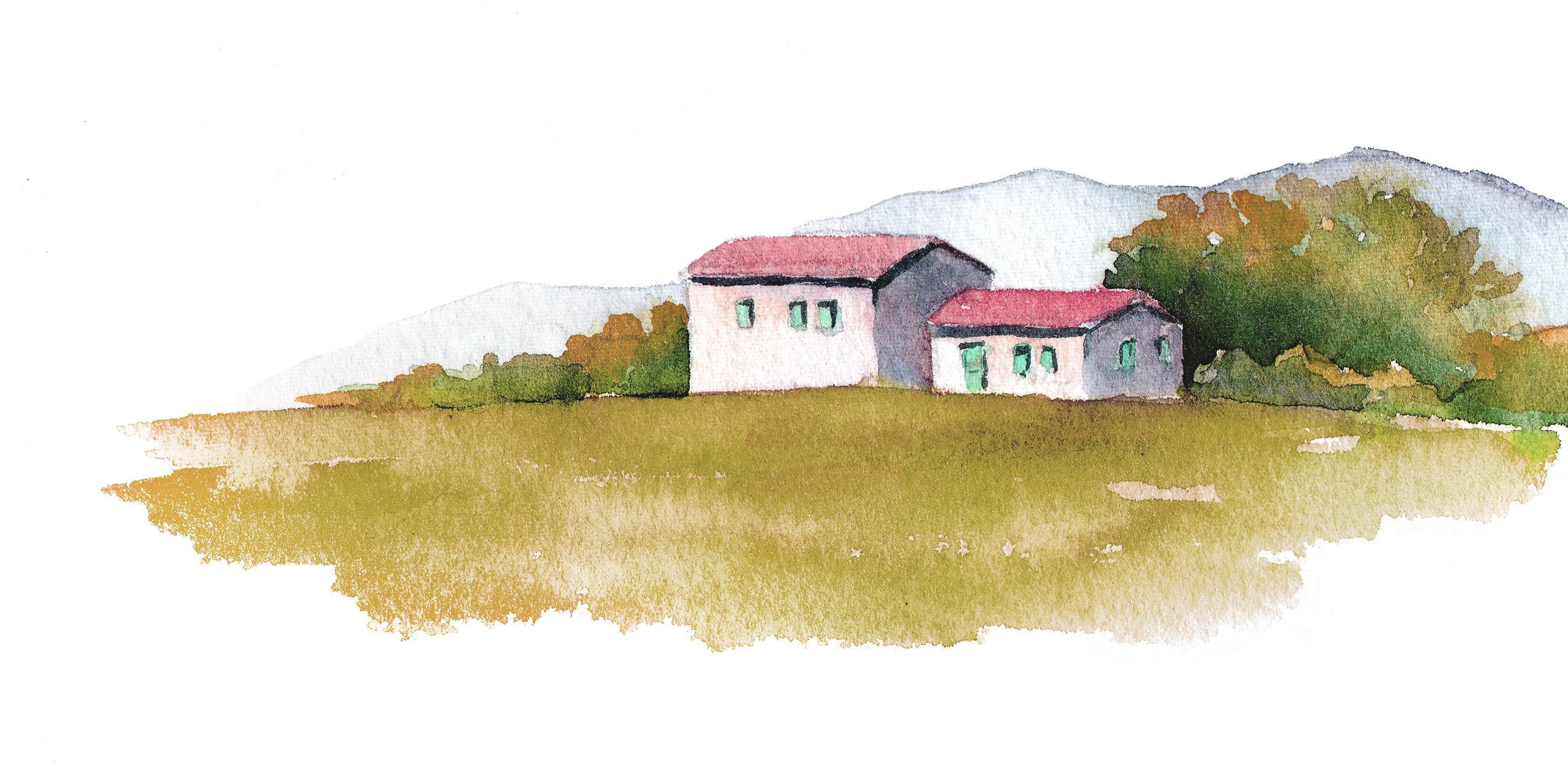
www.KosherSpirit.com 9
California Gourmet
Fudgy Brownies

Directions
1. Preheat oven to 375 degrees. Line 9 x 13 pan with parchment paper
Ingredients
3 eggs
1 1/2 cups sugar
3/4 cup oil
3/4 cup potato starch
1 cup cocoa powder (Dutch works, too)
1/2 tsp sea salt
1 1/2 cups California Gourmet 48%-Cocoa Kosher for Passover Chocolate Chips
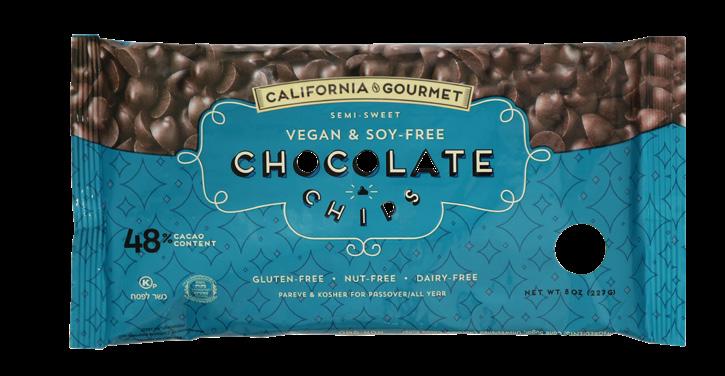
Makes 20 - 28 squares.
2. In large bowl, stir eggs, sugar, and oil with a whisk. In medium bowl, sift potato starch, cocoa powder, and salt.
3. Pour dry mixture in to the large bowl and stir until well combined.
4. Melt the California Gourmet chocolate chips and stir into batter. (Optional: you may stir in the chocolate chips unmelted, if preferred.)
5. Bake at 375 for 20-22 minutes, until toothpick comes out mostly dry. Allow to cool for 30 min. Cut into squares.
For more recipes, like and follow @CaliforniaGourmet on Facebook and Instagram, www.californiagourmet.net
When making this recipe for Pesach, verify that all ingredients are certified Kosher for Passover.
RECIPE 10 www.OK.org
RED COLOR a
closer look
Rabbi Sholom Ber
Food coloring is used to make food products more attractive and appealing and, often, to offset discol- oration due to processing or storage conditions.
— ~ Rabbinic Coordinator What is Red Color?
Red color is the most popular food coloring. It is used in dairy products, processed meats, salad dressings, baked goods, candies and many other foods and beverages.
The most commonly used red color in the USA is Red 40 (Allura Red AC). Manufacturers prefer to use Red 40 due to its availability, low cost and extended shelf life. Most importantly, Red 40 is a stable color because it does not fade easily due to acidity/pH levels or hot processing temperatures in the manufacturing process.
Due to debates regarding poten- tial behavior and health risks associ- ated with Red 40, manufacturers are seeking alternative options.
Carmine (cochineal) color is the most used natural red color. Manu- facturers like to use it because it is a natural and stable red color solu- tion. Carmine color, while natural and stable, is not a perfect solution since it is derived from insects, which makes it non-kosher, non-vegan, and not appealing to many consumers who don’t like to consume insect by- products.
The best natural red color is de- rived from fruits and vegetables, such as black carrots, grapes, beets and sweet potatoes. However, the fruit and vegetable colorings are generally not stable and fade during the manu- facturing process. Manufacturers are constantly working on ways to im- prove the stability of these colors.
Hendel
How is Red Color made?
RED 40 is made by reacting petroleum byproducts with other chemicals in a series of steps. The coloring results are then purified and sold as Red 40.
CARMINE COLOR is made from cochineal beetles that are col- lected in South America, killed and dried. The dried insects are then crushed and mixed with hot water and chemicals
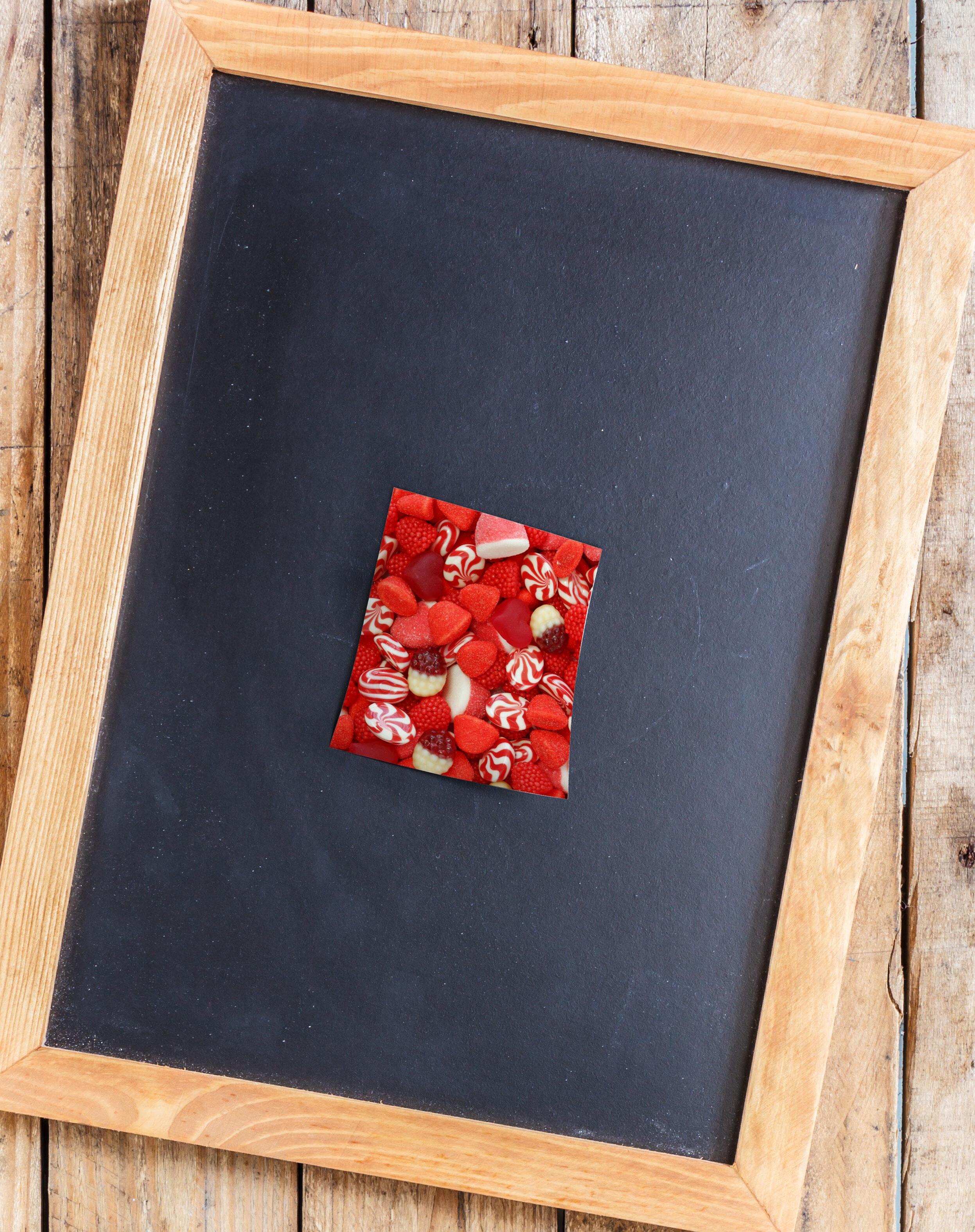
Is Red Color kosher?
Red 40 is made from ingredients that do not pose any kashrus con- cerns in their pure forms. Any addi- tives need to be monitored to verify the kosher status.
to make carminic acid which is further processed and purified with alcohol and other ad- ditives to make cochineal extract and carmine color.
FRUITS & VEGETABLES are crushed and enzymes are typically added to aid in extracting all the juices. The solids are then removed and the juices are filtered and evap- orated to make the concentrate. Often, additives are added to make the color more stable and to better mix into products.
The colors can be sold as a liquid or as a spray dried powder.
Carmine is derived from dried in- sects. While there are minority opin- ions that hold that carmine can be considered kosher, it is not the gen- erally accepted kosher practice. ~ Kosher considers carmine not kosher. Fruits and vegetable are inherently kosher with the exception of grapes and produce from Israel, both of which require special kosher su- pervision. Another concern is the additives that are typically added to the juices. In addition, there can be kosher concerns even with innocuous produce, because manufacturing equipment can be shared with non-kosher prod- ucts and therefore needs to be supervised. This is especially true if the products are dried, because spray driers are expensive pieces of equipment and companies do not want them to sit idle.
There are exciting developments in the red color industry from ~-cer- tified color manufacturer Chr. Han- sen. They are currently working on producing a synthetic carminic acid via fermentation
(micro-organisms
will be fed with carbohydrates and other additives and metabolize them into carminic acid). They are hoping to produce this product as kosher and have it available on the market within the next few years. This will be a rev- olutionary natural and kosher stable red color option.
www.KosherSpirit.com 11
GRAPES? to the Rest of the What Happens
By Rabbi BenZion Chanowitz
OOne hundred pounds of grapes yields approximately fifty pounds of wine, so what happens to the other fifty pounds? The residual pieces of pulp and skin are called pomace and are often used for fertilizer or animal feed. Large wineries, though, sometimes use the pomace to produce other usable food products.
Pomace may be used to produce tartaric acid, Grappa (a type of wine), tannins, food colors, food flavors, pectin, grapeseed oil, grapeseed flour, etc. Natural food coloring is produced from the skins and tartaric acid is a white crystalline acid found on the walls of emptied wine barrels and among
the grape remnants. Grapeseed oil and flour come from the seeds after they are thoroughly cleaned and dried. The oil and flour are extracted by using hexane (a petroleum derived solvent that works similarly to alcohol as a degreaser and is used regularly to extract oil from cotton seeds and similar seeds). The remainder is derived from the pomace or the marc of the grapes, which includes the seeds, skins and the stems.
Most of these byproducts are not produced at kosher wineries, which raises the question of whether we can use them for kosher food production. In the Pesach 5768 issue of Kosher Spirit , Rabbi Ahron Haskel discussed the production of kosher l’mehadrin tartaric acid, made exclusively from kosher wine. While it is

exemplary to use only kosher l’mehadrin tartaric acid, it is certainly not yet the standard in the kosher industry.
The Gemara says1: “The grape seeds and grape peels of idol worshippers, if they are moist, they are forbidden (to eat and even for other benefits, as Reb Yochanan explains), if they are dried out, it is permitted (even to eat). Reb Yehudah said in the name of Shmuel that for the twelve months after pressing they are considered moist. Afterwards, they are considered dry.”
The Gemara continues: Rav Zevid said, “The sediment of Aramean wine called אידרוד (durdaya) is permitted after twelve months have elapsed.” Tosafos quotes Rabbeinu Efraim, who says that if the sediments have been dried in an oven, it is permissible even before twelve months have elapsed. He therefore permitted using bread made with this sediment (note: cream of tartar acts like baking soda as a leavening agent and stabilizer).
Rabbeinu Tam vehemently disagreed. He explained that “durdaya is shmarim (sediments of the wine) that have been soaked and reused. In those days, it was common to make an inferior wine (similar to Grappa, though today Grappa is concentrated) out of the sediments of the wine. Rabbeinu Tam opines that the twelve months of drying can only begin after the sediments have been cleared of any wine taste. The Rashba says that the same would apply to the sediments left on the barrels; they would only be permitted after twelve months. [Note: The Rashba says this to explain why people have permitted using it, though there are some who say that it is best to be more stringent.]
The Shulchan Oruch paskens2 like Rabbeinu Tam, ruling that after the sediments have been reused (soaked and used to make an inferior type of wine) “tamdun” and then twelve months have elapsed, the sediments could be considered kosher. Shulchan Oruch also says3 that there are those who permit scraping off the remnants from the wine

www.KosherSpirit.com 13
1. Avoda Zara, Daf 34a.
2. Yoreh Deah, Siman 123, S’if 14.
3. Yoreh Deah, Siman 123, S’if 16.
“the sediment of aramean wine called אידרוד (durdaya) is permitted after twelve months have elapsed”
caskets and waiting a year to use them. Clearly, this is the accepted opinion as tartaric acid was traditionally made from the hard, stone-like material that hardened on the barrels and was called “vayn shtayn” in Yiddish (wine stone). Many of the poskim have discussed the halachic status of tartaric acid and why it was permitted.
Today, tartaric acid is dried mechanically to about 8% moisture (note: dried rice has about 11% moisture). Though there are some opinions that require twelve months of natural drying (Perisha and others), most hechsherim permit mechanical drying.
In addition, there are some companies that make tartaric acid by concentrating grape juice, separating the tartaric acid with a centrifuge, and then drying it thoroughly. In this case, many hechsherim permit this method. HaRav M.M. Weissmandl א”טילש, in his teshuvos to the ~, does not permit this approach.
As for grapeseed oil, there is a teshuva from the Chasam Sofer4 discussing the process of removing the oil from the grape seeds. The Chasam Sofer concluded that grapeseed oil would be permitted even
if the seeds were not dried for twelve months, because the oil does not have any grape taste and is considered “nishtanah” (changed to a new food).
This heter from the Chasasm Sofer cannot be used for grapeseed extract or grapeseed flour since the pomace or skins can also be used in the production. In addition, there are often remnants of a fruity taste in the final product. Originally, a leading kosher supervision permitted grapeseed extract, because they considered the grapeseed to be a piece of wood. About ten years ago, Rabbi Shlomo Miller wrote a teshuva prohibiting grapeseed extract until the twelve months of drying had passed, so the agency no longer permits grapeseed extract from seeds that have not been dried.

As you can see, kosher wine production is a lot more than meets the eye. It encompasses many facets of the kosher food industry, from actual bottled wine and grape juice, to the various byproducts discussed here.
Please feel free to send your comments or questions to editor@kosherspirit.com. ~
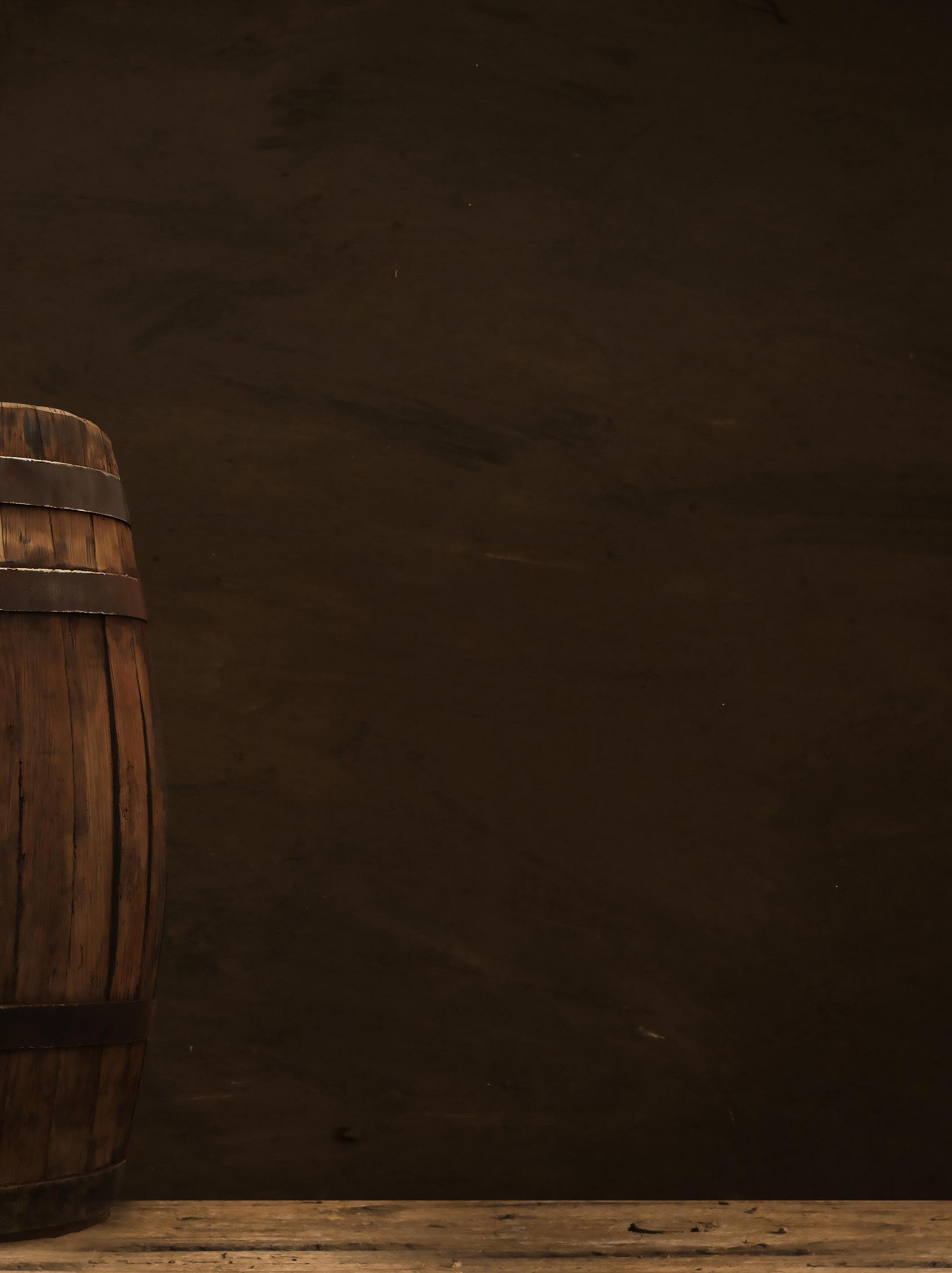
14 www.OK.org
kosher wine production is a lot more than meets the eye. it encompasses many facets of the kosher food industry, from actual bottled wine and grape juice, to the various byproducts.
4. Yoreh Deah, Siman 117.
I would like to thank my esteemed readers for their comments on previous installments.
In my previous article, I mentioned that Rav Moshe Feinstein paskened that wine that was cooked to 165˚F or 175˚F is considered mevushal and the Tzelemer Rov held that it must be cooked to 190˚F to be considered mevushal. I also insinuated that this was possibly based on the various interpretations of the Rambam’s opinion that the wine must evaporate and lose some of its volume to be considered mevushal.
Water actually begins to evaporate at room temperature. When you leave a wet plate out on the counter, it will dry after some time has passed, but the evaporation is clearly minimal. When it comes to discussing evaporation points, one is generally referring to the point when liquid changes to steam, which happens with water at sea level at a temperature of 212˚F (100˚C).
What about wine? At what temperature does it change from liquid to steam? The answer is a bit complicated since the wine is made up of water and alcohol (which comes from the fermented sugars in the wine).
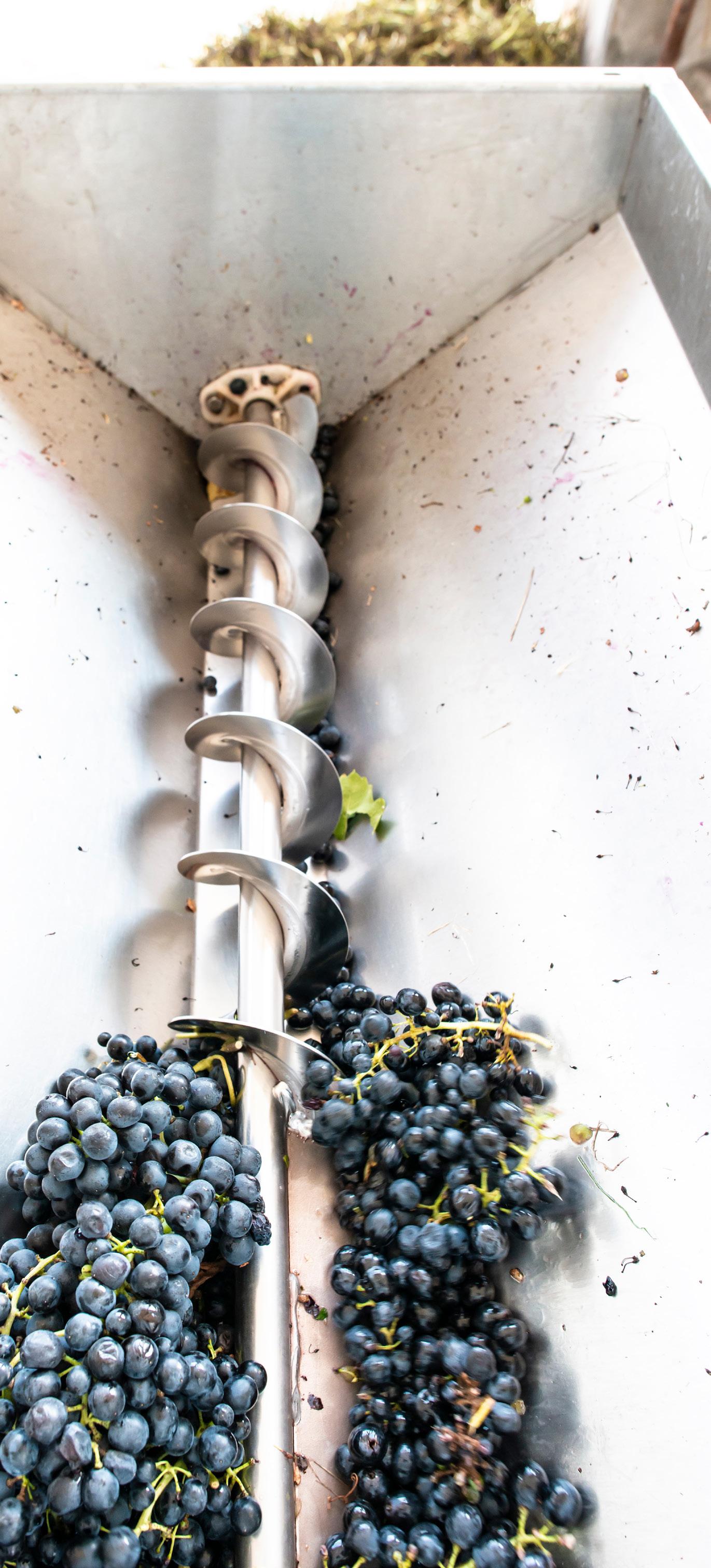
First, it is necessary to go over the process of distilling. When there are two liquids mixed together and they need to be separated, one uses a process called distilling. Since the boiling point of alcohol is lower than the boiling point of water, it is easy to separate the two. To accomplish this, the wine is cooked until the acohol’s boiling point and all of the alcohol is allowed to turn into steam. Usually, when one boils something, the steam rises and gets mixed into the atmosphere. In this case though, the cooking pot is covered and the steam is forced into a thin tube. This tube empties into another pot where it is cooled below the alcohol’s boiling point, which allows the steam to turn back into liquid. The liquid contains only the alcohol from the wine, and if distillation is done properly, the resulting liquid is clear wine alcohol.
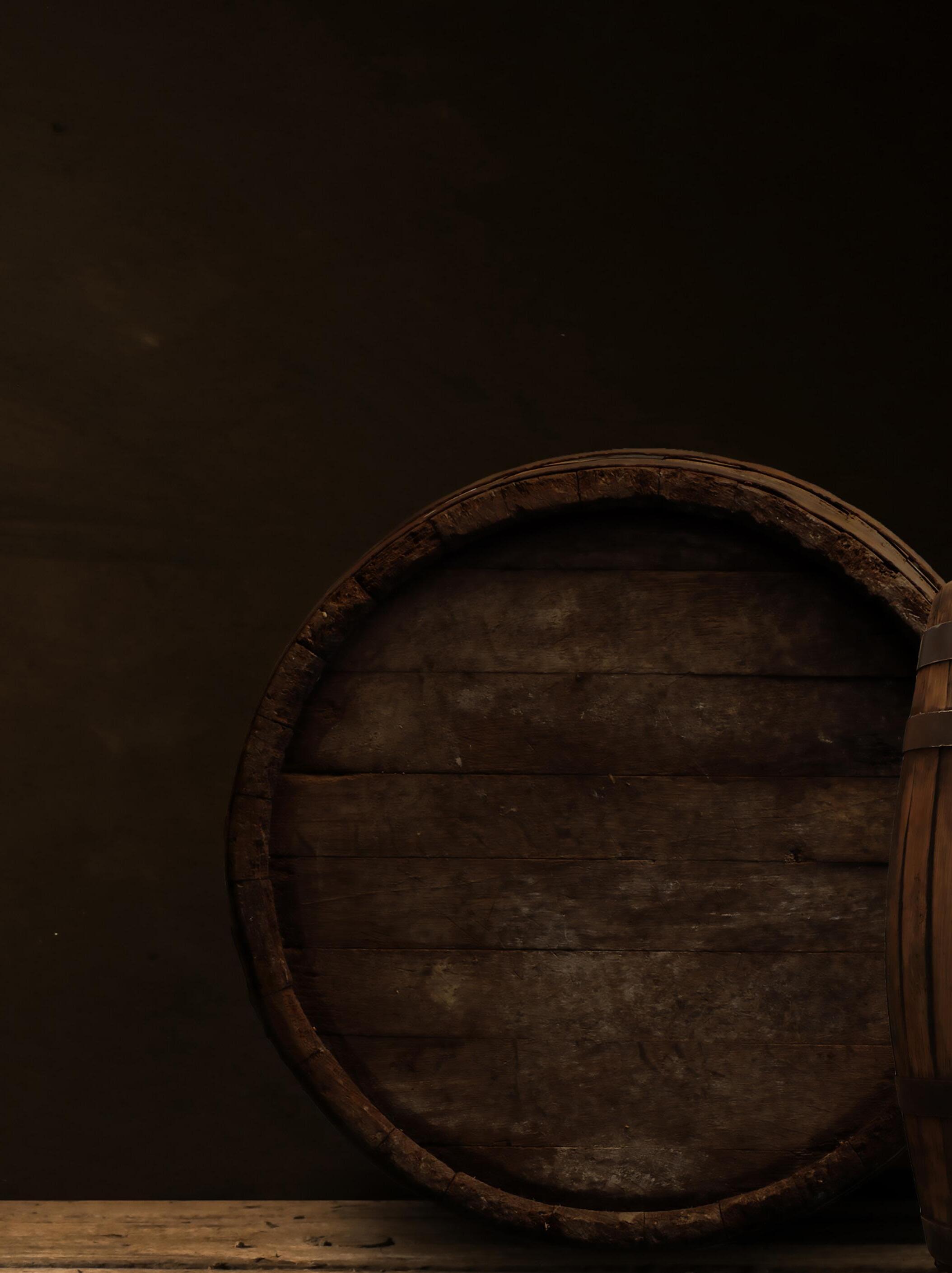
At what temperature does distillation happen?
The optimal temperature to distill alcohol is from 172-180˚F, which results in the purest alcohol, known as the “heart”. If distillation is done between 165-172˚F, it results in slightly impure alcohol, known as the “head”. When alcohol is distilled between 180-185˚F, the resulting alcohol is also slightly impure, known as the “tail”.
Accordingly, this data seems to strongly support Rav Moshe’s opinion that loss of volume begins at 165˚F.
www.KosherSpirit.com 15
Blue Diamond Growers™ has manufactured kosher foods for over 30 years. Our kosher venture began in the 1980s and continues to prosper as Blue Diamond Growers™ offers more and more almond innovation products. With the guidance of ~ Kosher, last year Blue Diamond Growers™ expanded its kosher program by obtaining Badatz Kosher for selected industrial products for a specific Israeli market. ~ Rabbinic Coordinator Rabbi Hendel’s knowledge and support was instrumental in our accomplishment of Badatz Kosher certification.
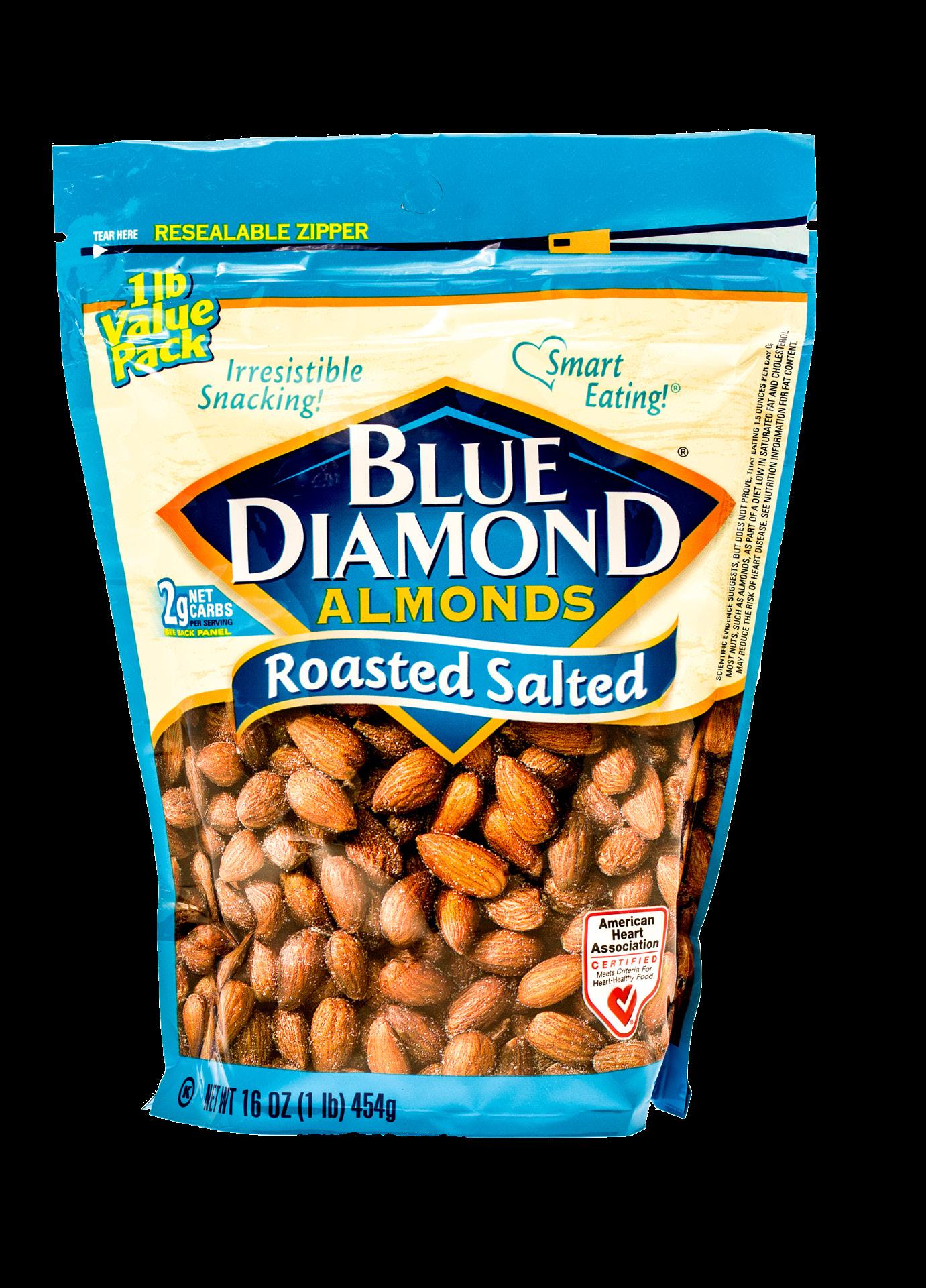
Kosher Trailblazer:
Kosher Salutes Those Who Go the Extra Mile
Interview of Steven Phillips
Manager – Corporate Food Safety and Quality Blue Diamond Growers

Describe your first encounter with the ~.
Having worked for Blue Diamond Growers™ for the past 19-years, my first exposure to ~ Kosher occurred in 2007 when my soon-to-be retired predecessor, Gary Gray, introduced me to Rabbi Avraham Brod during a routine monthly kosher inspection on behalf of ~ Headquarters. Since that first introduction in 2007, I have been responsible for managing Blue Diamond Growers™ kosher program and overseeing our ongoing partnership with ~ Kosher. I regularly correspond with Rabbi Hendel, Rabbi Wilschanski, and our Account Representative Mindy Goodman at ~ Headquarters and they are all a pleasure to work with.

16 www.OK.org
How did going kosher make a difference in your business?
Maintaining a reliable kosher program provides Blue Diamond Growers™ the opportunity to support the dietary needs of our valued kosher consumer segment. Our kosher program continues to afford Blue Diamond Growers™ the benefit of supplying large confectionary and cereal companies with industrial kosher products. Ultimately, the standards associated with kosher have assisted with providing a level of confidence with our customers and consumers that Blue Diamond Growers™ is committed to providing safe and wholesome almond products. What’s the hardest thing about going or maintaining kosher?
Thankfully under the guidance of ~ Kosher, Blue Diamond Growers™ has not experienced any major concerns with our kosher program. If I had to pick an area of vigilance within our kosher program it would be to formulate new flavors and seasonings without dairy constituents when feasible. Blue Diamond Growers™ is committed to offering pareve products, and not incorporating the declaration of Kosher Dairy Equipment (DE). As such, the Quality Assurance Department and Almond Innovation Center work closely together to ensure seasoning formulations are dairy free or limited to select types of processing where Kosher DE will not be a concern.
tamins. We aspire to ensure everyone has the opportunity to enjoy the goodness of Blue Diamond Almonds™.
What would you say to someone who is thinking about going kosher?
While the initial investment of resources in becoming kosher for the first time may seem daunting, the process is relatively simple. Any perceived hardships with initiating kosher will be set aside as the benefits of opening a new market segment and building new business relationships are experienced.
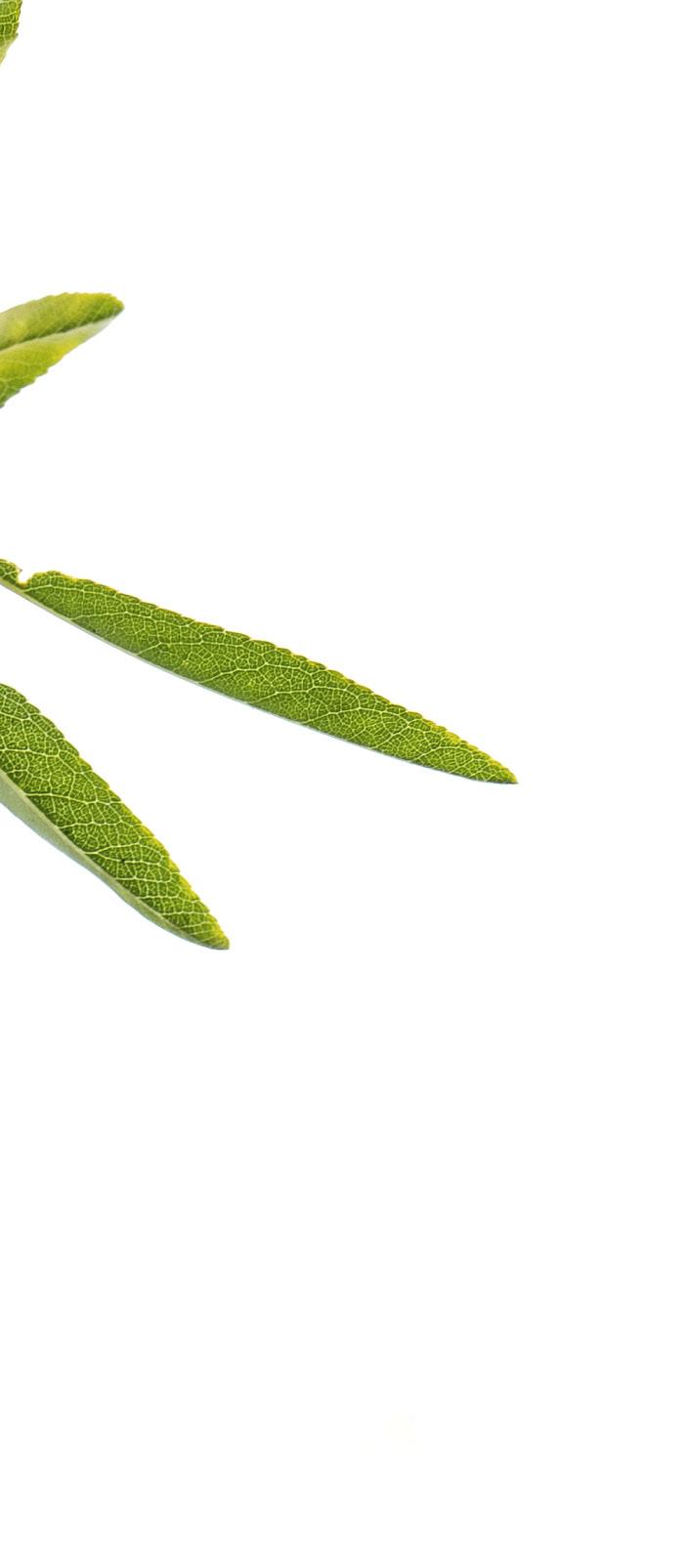
What do you wish you knew when you started that you know now?
Since Blue Diamond Growers™ has participated in kosher for over 30 years, I was fortunate to inherit a well-established kosher program. One aspect of kosher is very certain in that partnering with a reliable kosher certifying agency is the key to an efficient development and deployment of a kosher program.
Can you share with us some exciting kosher projects you are working on?
Is it true that you have Passover-approved products in the works?
A word from Rabbi Sholom Ber Hendel, Rabbinic Coordinator for Blue Diamond Growers:
What’s your motivation for going kosher?
Our motivation for going kosher and for maintaining kosher is so that we can continue to provide the benefits of Blue Diamond Almonds™ to the world. Almonds are known for being a heart healthy food source with many valued nutrients and vi-

Blue Diamond Growers™ continually strives to offer new, innovative and exciting almond products to our consumers. Retail ready packs of almond flour that are approved for Passover will soon be available at retailers. It is safe to say that Almond Innovation Center remains focused on developing kosher projects that we hope will satisfy our consumer’s hunger for new and delicious almond products. ~
“It is a real pleasure working with Steven. He has extensive knowledge of the kosher requirements and ensures that the ~ Kosher standards are implemented and adhered to at all Blue Diamond facilities. He is quick to respond to any inquiries and constantly works to make more products kosher pareve and kosher for Passover certified. We would like to take this opportunity to wish Steven and Blue Diamond continued success in their work, which is greatly appreciated by both the ~ and the kosher consumer.”
www.KosherSpirit.com 17
By Rabbi Yakov Teichman, Rabbinic Coordinator, Tolaim Committee
~ Kosher takes great pride in the departmental structure of our agency. Our rabbis have varied areas of expertise (many have more than one area of specialty!) and our organization is structured to maximize the impact of each rabbi’s knowledge and provide consumers with kosher products that uphold the highest standards of kashrus. We have an Ingredient Department staffed by rabbis with food chemistry training and many years of technical field experience, we have rabbis who are dairy experts overseeing the cheese facilities, etc.
One of our more recent departmental additions is the Tolaim Committee, tasked with staying on top of the latest de-
Revolutionizes KOSHER
Infestation Monitoring & Control
velopments in produce infestation and checking techniques. Whenever a product with a potential for infestation is considered for certification, the Tolaim Committee is consulted to ensure that a product bearing the ~ symbol is ready to eat without further
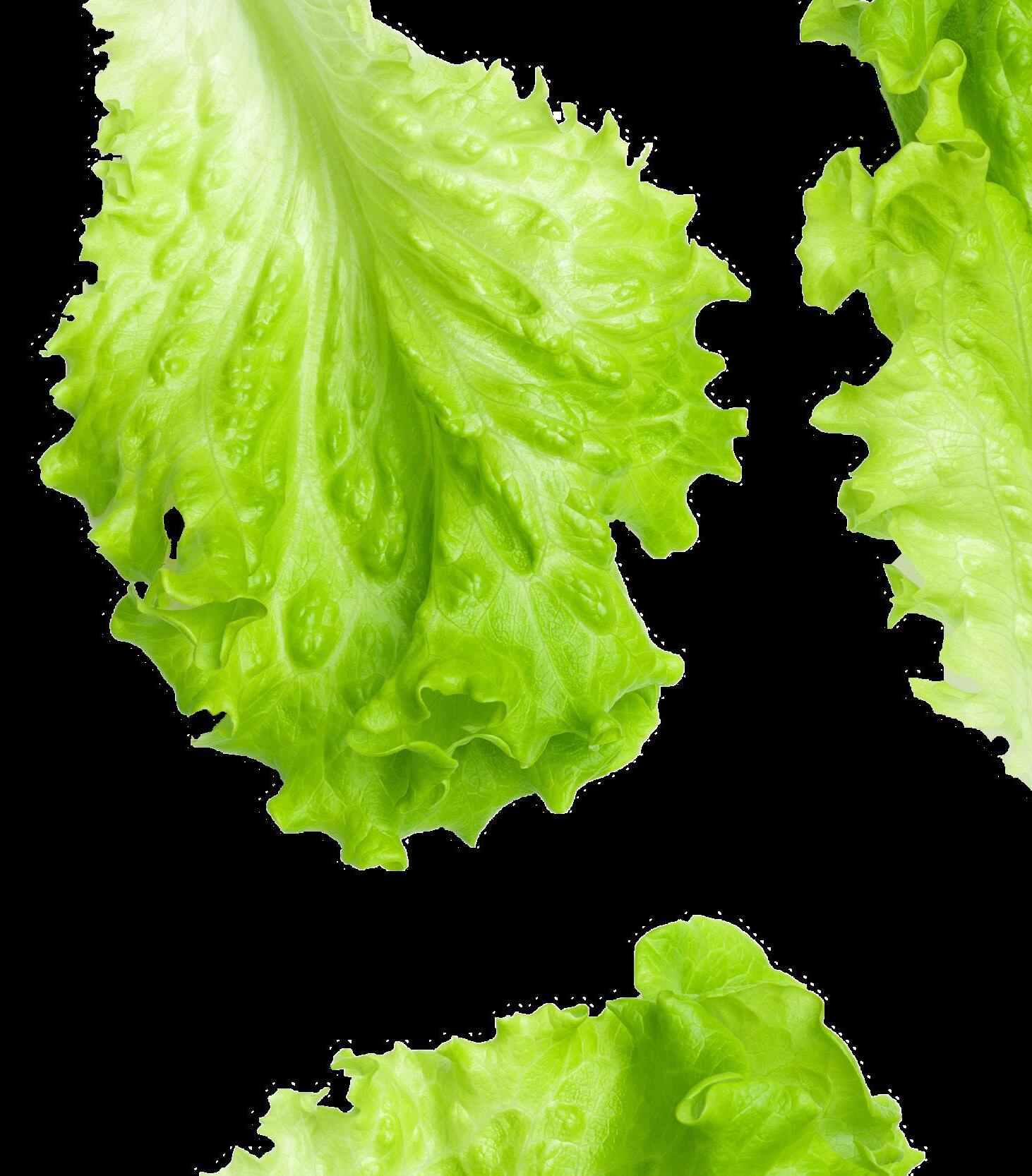
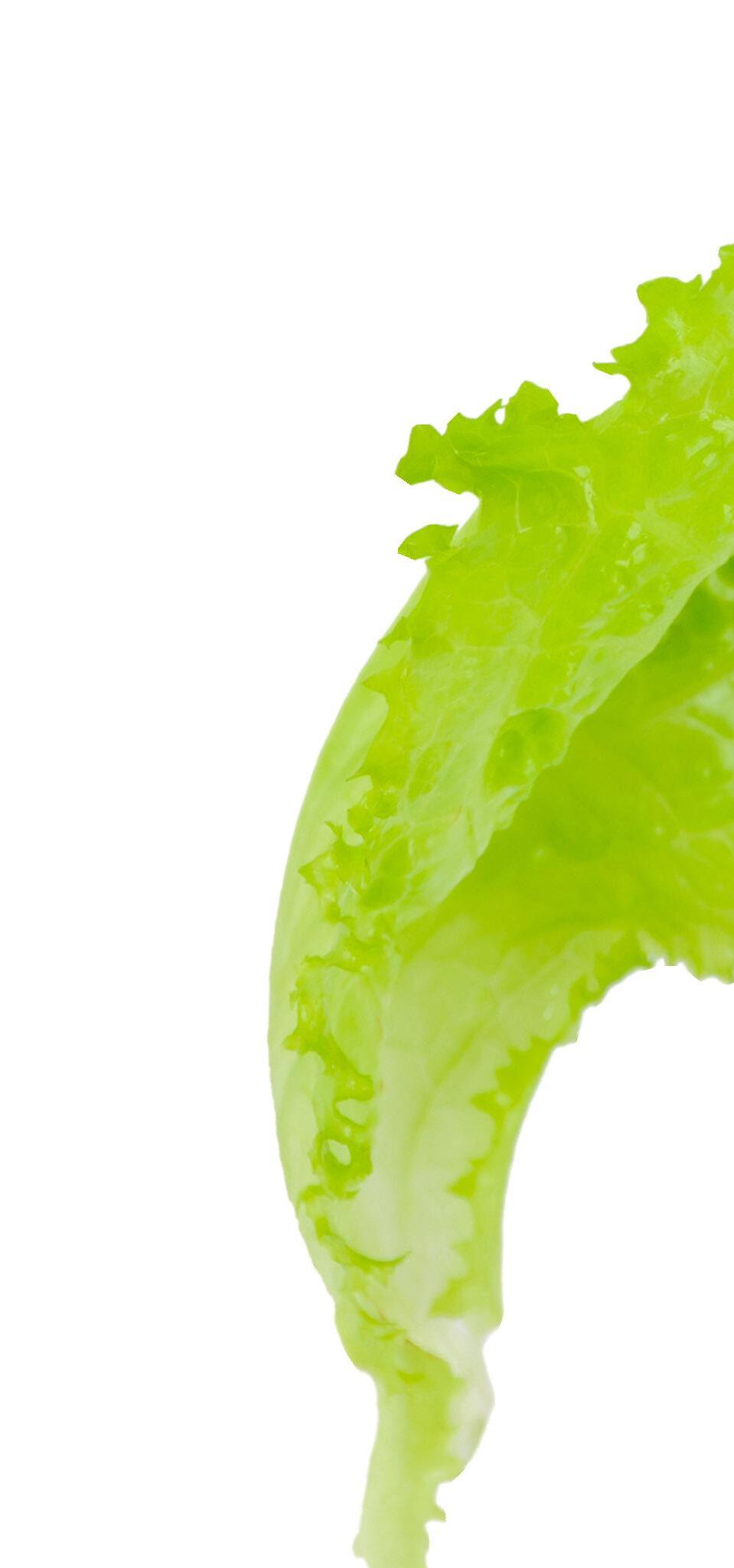
So, what exactly does the com mittee do? There are various types of produce that are evaluated for infes tation, including fresh, frozen, freezedried and dried/dehydrated. When a product is submitted for approval (for use in an ~ certified product) or for certification, the committee evaluates whether it is a product that is prone to insect infestation and the level of infestation. Sometimes, the infesta tion levels are well known and some times it’s a product that hasn’t been extensively researched before, like amaranth and shiso.
Typically, we request that the company send us samples so that we can evaluate the product in our inhouse lab, without pressure or time constraints. Infestation levels vary depending on the product, the pro cess, the region where the product is grown and the season, so ongoing sampling is often required. After we have done the necessary research, the
Tolaim Committee can make a decision. Sometimes we reject the product completely; sometimes we reject a particular source, season or region; sometimes we approve the product with periodic sample checks; and, sometimes the product requires very frequent sample checks to maintain
18 www.OK.org
In the lab we have multiple mashgichim who are working on research. This allows us a more accurate reading of the data, as there is more than one set of eyes checking the products. In addition, Rabbinic Coordinators who specialize in bedikas tolaim supervise the mashgichim, review their findings and formulate conclusions about the status of the produce in question. Situations that require additional rabbinic guidance are forwarded to HaRav Usher Eckstein shlit”a, a recognized expert in bedikas tolaim.
How is the produce checked?
Produce that is inspected in our lab is checked through the mesh cloth/ shmatte method (outlined in detail in the Vegetable Checking Guide). Produce is washed in a basin with soap and filtered water and the water is then checked by draining it through a mesh cloth. Depending on the level of research we are conducting, the mashgiach may dispose of the product after washing or, perhaps, wash it another time to see what the results are after a second wash. The findings from each inspection are electronically documented and submitted to the Tolaim Committee for a conclusive decision.
Dole Fresh Vegetables Comes Under ~ Kosher Supervision

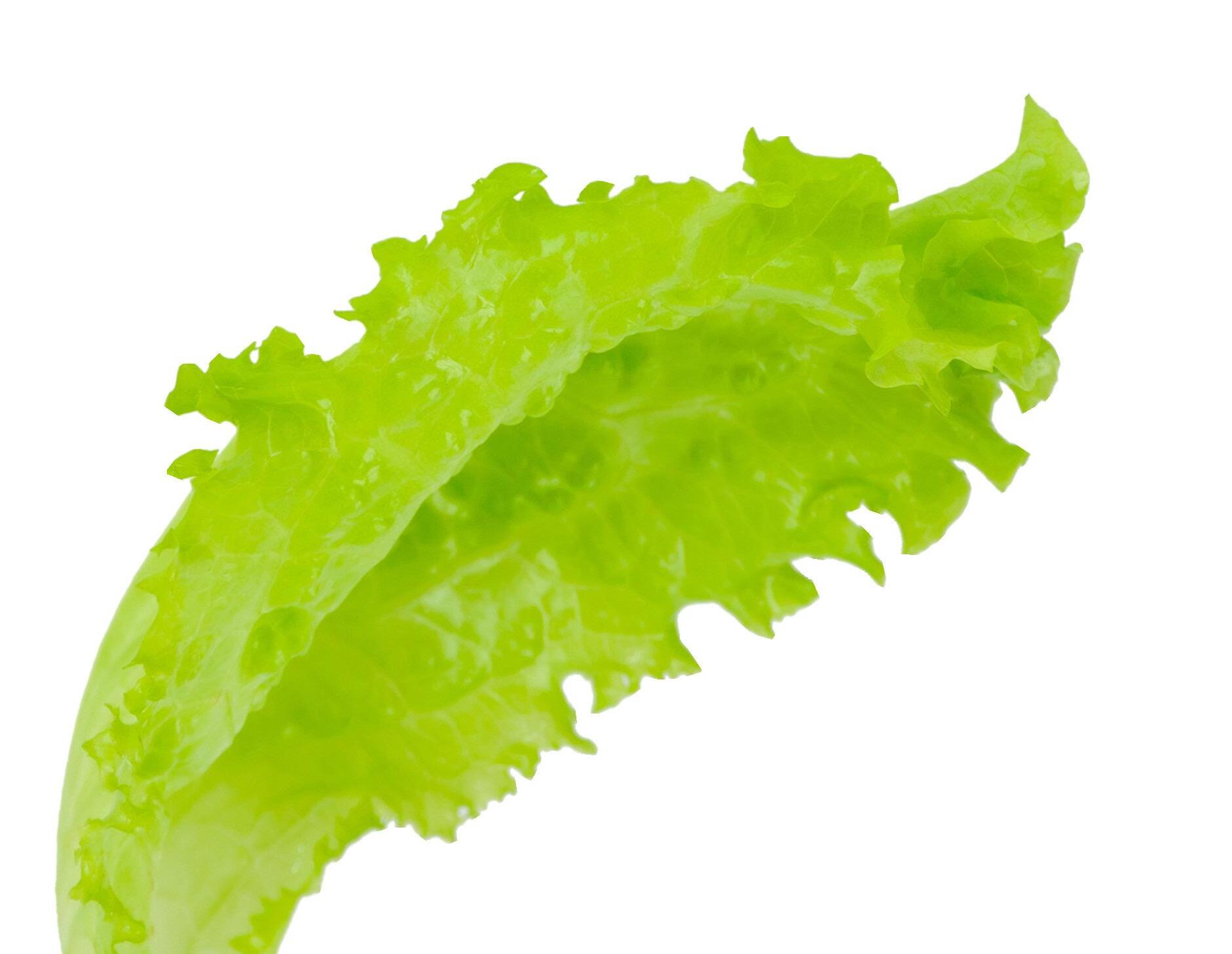
Now you can have your salad and eat it too.

Dole Fresh Vegetables, a subsidiary of Dole Food Company and a leading brand for fresh, fast and healthy salad solutions, is now certified by ~ Kosher Certification. The transition, which kicked off earlier this year, demonstrates the produce company’s commitment to quality, purity and, of course, acceptability in the religious sector (sourcing, as well as intensive infestation control, are both prime features in the kosher program for produce operations).
Dole Fresh Vegetables which covers salad blends, chopped salads, shredded vegetables, romaine hearts, salad kits and slaw, selected ~ Kosher to partner with on this new endeavor. “One of the core tenets of Dole’s mission is a full commitment to transparency in all our operations,” stated Aaron Schneider, Dole Food Company’s Director of Food Safety and Quality Assurance Supply Chain, North America. “Another is to empower all consumers to be able to select the highest-quality fresh food possible for their lives. Having this third party guidance and supervision with ~ Kosher allows us to further fulfill those missions with the kosher community. We stand behind the quality and purity of of our Dole vegetable products, and this certification by ~ reinforces that commitment.”
As with many key food and beverage companies, ~ Kosher remains a top choice for premier service, professionalism and an efficient application of kosher regulatory structure for the highest level of compliance possible.
The certification program under ~ Kosher includes full-scale supervision of several farms and facilities across the US. ~ Kosher’s Rabbinic Coordinator, Rabbi Yakov Teichman, heads the kosher program for Dole and supervises the many field representatives, or mashgichim (rabbis trained in the protocols of the kosher requirements of their respective assignments), as well as ~ Kosher’s Fresh Produce Team – expert rabbis versed in the extensive kosher laws and realities of precluding infestation issues in produce. Rabbi Fogelman, Director of Public Relations at ~ Kosher, highlighted the “appropriateness of the match between ~ Kosher and Dole in light of our expertise in the area of produce pest research and control.” ~ Kosher recently updated and rereleased the latest version of their Consumer Bug-Checking Guide (available both online and as an app), developed by their experts based in ~ Kosher’s New York laboratory. Dole’s program consists of extensive sample checks at both the facility level and in the ~ Kosher lab. Consumers should be advised that only products and specific lots bearing the ~ Kosher symbol are under kosher certification, including salad kits which contain dressings, most of which are Pareve, and some with the ~D (Dairy) distinction.
Kosher certification, in general, is becoming an increasingly important regulatory measure, with a rapidly growing market both in the US and globally. Currently, ~ Kosher certifies an array of products for Dole Fresh Vegetables, with plans to add more in the near future. With ~ Kosher certification, consumers with religious, allergy and other dietary standards can now rely on the quality and convenience of Dole Fresh Vegetables at retailers nationwide.
www.KosherSpirit.com 19
MEET OUR STAFF:
WHO’S BEHIND THE ~
~
BEHIND
Interview with Rabbi Levi Feigelstock
KS: Where did you grow up? Where did you go to yeshiva?
RLF: I was born and raised in Vancouver, Canada. I attended Vancouver Hebrew Academy for elementary school, and after my bar mitzvah I left home to attend Mesivta of Postville, the Lubavitcher school in Postville, Iowa. After completing my studies in Iowa, I went to Eretz Yisroel for Yeshiva Gedolah at Tomchei Tmimim in Haifa. I studied for semicha at Tomchei Tmimim in Kiryat Gat, under the direction of Rabbi Zalman Yeruslovsky, shlit”a, and received semicha from Rabbi Moshe Havlin, shlit”a, and Rabbi Mordechai Eliyahu, ztz”l.

KS: What did you do after yeshiva?
RLF: After yeshiva, I gave classes at the Chabad House in Budapest, Hungary and was involved in outreach with university students. I then moved to Vancouver and I got married and continued building my family in Vancouver. I became the rabbi and director of The Bayit Congregation, where my wife and I ran programs and expanded Jewish life in the suburbs of Vancouver. I also managed the Food Service department and field operations for the local kosher certification. During my time there, I started my career in kashrus, working for many of the major kosher agencies.
KS: What is your current position at the ~?
RLF: I am currently the Food Service Coordinator for South Florida and the ~ Regional representative of the Southeastern United States. I also travel worldwide to conduct annual inspections at ~ facilities.
KS: What prepared you the most for your current position at the ~?
RLF: I grew up in a home that lived and breathed kashrus. My father, Rabbi A. Feigelstock 'יחיש , is a Rav Hamachshir, so the kashrus industry was always a part of my life. When I started my first full time employment in the field of kashrus I was introduced to Rabbi Eli Lando, who taught me the meaning of professionalism and thoroughness. Working with a wide array of hashgachos and manufacturing facilities provided me with the skills and expertise to deal with unique situations with the utmost confidence and in a professional manner. Additionally, my numerous and extensive kashrus trips in rural Alaska gave me the opportunity to familiarize myself with the unique challenges that kashrus employees face on a daily basis.
Rabbi Levi Feigelstock
20 www.OK.org
KS: What is best thing about working at the ~?
RLF: The ~ support system for their employees in the field is second to none. The ~ as a whole, and its individual employees, upholds the highest standard of professionalism, which creates a fantastic atmosphere in which to work. The management trusts the abilities of the staff and empowers them to perform to the best of their potential. Rabbi Levy makes himself very approachable to all staff members of the ~ regarding all matters, whether personal or professional. The Food Service staff, especially Rabbi Teichman and Rabbi Weinfeld, are always available and of great assistance to the Regional Coordinators and are incredible at assisting in the implementation of ~ standards in all establishments.
KS: How would you describe the ~ today?
RLF: The ~ today is the gold standard of what a professional kosher supervision agency should be. They are at the forefront of food manufacturing and technology. Here in Florida, where I am primarily based, the ~ holds itself to the highest levels of kashrus and ensures consumers’ peace of mind when eating at their establishments. On a more global level, the ~ shares all of its standards openly on their website, and proudly enforces them. This includes Cholov Yisroel, Pas and Bishul Yisroel and Chassidishe Shechita at all food service establishments.
KS: Can you share an interesting experience that you had while working at the ~?
RLF: My first trip overseas for the ~ was a visit to Japan where I learned a lot about humanity and other cultures. It was a moving and humbling experience for me to visit the mikvah that my father, sheyichye, and Rabbi Bernard Levy, OBM, helped establish in Kobe over 30 years ago!
While I was there, frantic news started coming in about the upcoming Hurricane Irma. As it became more obvious that we would need to evacuate in Florida, I had to reschedule my last few days in Japan so that I could catch one of the last flights going back to my family in South Florida. It was a really challenging experience for me to have to fly back in emergency mode, going through security and customs twice in the span of half an hour, under the pressure that I would possibly not make it back to my family. Boruch Hashem, I arrived in time to help my wife and children evacuate and we were all safe throughout it all. ~
What Other People Say
Rabbi Levi Feigelstock
“ Being a second generation kashrus professional definitely shows in Rabbi Feigelstock’s approach to kashrus. Levi has quickly become part of the worldwide ~ team and is a significant contributor to the growth of the ~ in Florida and around the world.”
Rabbi Don Yoel Levy
Kashrus Administrator
“ Despite Rabbi Feigelstock’s youth, he came to the ~ with 10 years of experience in the kashrus world. It is a pleasure and a joy to work with him, and as the manager of the Food Service Department, I am proud to have him as my representative in Florida. Rabbi Feigelstock has both intelligence and humility; he is not afraid to ask questions and he is truly the embodiment of the Mishna: ‘The one who is not embarrassed to ask, he learns the most.’ Food service in Florida has grown tremendously in his capable hands and he is integral to the success of the ~ in Florida.”
Rabbi Kalman Weinfeld
Rabbinic Coordinator, Food Service Director
“ Rabbi Feigelstock possesses a great combination of attention to the needs of our customers and a laser sharp focus on upholding the ~’s kashrus standards. He is a real asset to the ~ team and his turnaround time on customer requests is second to none.”
Rabbi Yakov Teichman
Rabbinic Coordinator, Food Service
“ “
www.KosherSpirit.com 21
All One Family
In Jewish homes all over the world, women - and men - are busy preparing for Passover. This is not merely an excuse for a solid spring cleaning. Passover is the festival of faith and the festival of freedom. The exodus should be celebrated as an event of the present, not of the past. Each person should feel that he is leaving his personal Egypt, i.e., going beyond all the boundaries and limitations that confine his essential Gdly nature.
But to enable ourselves to properly experience this faith and freedom, the Torah requires to rid our homes of chametz Chametz means any product made from grain that was not produced according to the Rabbinic guidelines enabling it to be used on Passover.
But Chametz is more than a ritual requirement. It communicates a profound spiritual concept. What does the leavening process entail? Grain is mixed with water and allowed to rise. This is understood as an allegory referring to egocentric pride and selfconcern, getting puffed up with one’s own self.
To experience the freedom and faith of Pesach, we’ve got to purge these feelings of self-concern. That’s why in the Temple, it was forbidden to offer the Paschal sacrifice if you still owned chametz. Sometimes, before good can come in, the bad has to be driven out.
And so, cleaning the house for Pesach is not merely a physical chore. It teaches us to search our personalities for pride and egotism and to destroy even the tiniest crumbs.
The Seder is intended to be a personal experience of redemption. It should not, however, be a private one. The Torah teaches us that this realization should be experienced communally. The Paschal sacrifice, it
Reprinted from Keeping In Touch - Vol. 1 by Rabbi Eliyahu Touger Based on the teachings of the Lubavitcher Rebbe
commands, should be offered limishpichoseichem, “for your families.” For however personal our Passover experience is, we should share and celebrate it together with our families - immediate and extended. Each person reaches out to another, helping him or her understand and taste Redemption.
The Haggadah points to this concept in its discussion of the four sons. It is not only the wise who are gathered at the Seder table, but also the simple, those who identify Jewishly and appreciate observance, but have difficulty defining and verbalizing their identification. And they are joined by those who do not know how to ask - those who know that they are Jewish, but know little more than that, who do not know where to begin looking to find out more about their faith.
And together with them comes the wicked - Jews who rebel and challenge observance, but at the same time, want to share in the Seder experience. Whatever their personal or ideological peeves with Jewish practice, they feel that on Passover night, they belong at a Seder.
And these sons celebrate the Seder together. They do not make four separate Sedorim; they come together at the same table. For they are all part of the same people, and the experience of redemption that each is seeking is intertwined with that of the other.
The Haggadah points to this concept in its words: echad chacham, echad rasha.... “One is wise, one is wicked...” The essential oneness that permeates the Jewish people and the mystic oneness of Gd that pervades all existence is reflected in all four sons.
The order in which the four sons are mentioned also teaches us an important lesson: The wicked son comes right after the wise son. This points to the wicked son’s inner potential. The
only thing separating him from the wise son is his desire, and that can be changed. And that is another reason why they are sitting together, so that they can share and communicate and allow the fundamental Jewish desire that they possess in their hearts to come to the surface.
When these four sons get together, they can bring a fifth son to the Seder table - a son or a daughter who is Jewish but for some reason was not planning to come to a Seder table. When the Haggadah was written, this type of son did not exist. Now unfortunately he is a very prevalent type of person within the Jewish community.
However apathetic to his or her Jewish roots this fifth son appears, within his heart, there is also a desire to become part of the Jewish experience. And when all four sons come together on Passover, the dynamic synergy that results will be powerful enough to inspire all the fifth sons to claim their place at the Seder table.
The content in this page is produced by Chabad.org, and is copyrighted by the author and/or Chabad. org. If you enjoyed this article, we encourage you to distribute it further, provided that you do not revise any part of it, and you include this note, credit the author, and link to www.chabad.org.
If you wish to republish this article in a periodical, book, or website, please email permissions@ chabad.org.
CHASSIDIC INSIGHTS 22 www.OK.org
SOUl NuTRition
By Rabbi Chaim Fogelman
during the Seder, some people have the custom to dip a finger in their cup of wine for each of the 10 plagues, while others have the custom to pick up the cup and pour out some wine for each plague. The custom of picking up the cup can be explained with a Gematria. The Hebrew word for “cup,” סוכ, has the numerical value of 86, which is the same numerical value as the word עבטה, “nature.” Within nature, there are positive potentials that can be used for holiness, and undesirable qualities which must be discarded. Differentiating between these two categories is not easy. To accomplish this successfully, we must manifest control — over ourselves, and then over our natural environment. In allusion to this, rather than dipping our finger in the cup, we take the cup — nature — in hand, demonstrating our mastery.
—The Rebbe Rayatz, Rabbi Yosef Y. Schneersohn of Lubavitch
before “Az Yashir” (the Song at the Sea), we say, “And the L-rd delivered Israel on that day from the hands of the Egyptians, and Israel saw the Egyptians dead on the seashore.”
Why do we emphasize “on that day” when B’nei Yisroel left Egypt a week before and Hashem had helped them many times already? What is the connection between “on that day” and seeing the Egyptians dead?
In the Gemara (Kiddushin 16), it says that if someone was a slave for less than 6 years, ran away, and was caught, he must be returned to his master to complete his service. However, if his owner dies, the slave is free.
B’nei Yisroel was supposed to endure slavery in Egypt for 400 years. They escaped early, and if they had been caught they might have been returned to their masters to complete their servitude. They weren’t truly free until they saw their owners were dead.
That’s why it was “on this day”, Shvi’i Shel Pesach, that they felt G-d’s salvation most acutely, because their freedom was truly complete when they witnessed the deaths of their Egyptian masters on the seashore.

www.KosherSpirit.com 23



Download the Kosher Food Guide app and get the most updated list of the Kosher for Passover products that ~ Kosher certifies. It’s like having a rabbi at your side whenever you go shopping... Is it Kosher for Pesach? KOSHER CER TIFICATION ~ Kosher Spirit, 391 Troy Avenue • Brooklyn, NY 11213 718-756-7500 • info@ok.org • www.ok.org follow us on Twitter @KosherAler ts For the latest in Kosher news: follow us on Facebook facebook.com/okkosher Best wishes for a K osher and Freilichen Pesach from ~ K osher Cer tification Search OK Kosher in the App Store or Google Play store. Search “OK Kosher” on the App Store & Google Play to find our apps




































